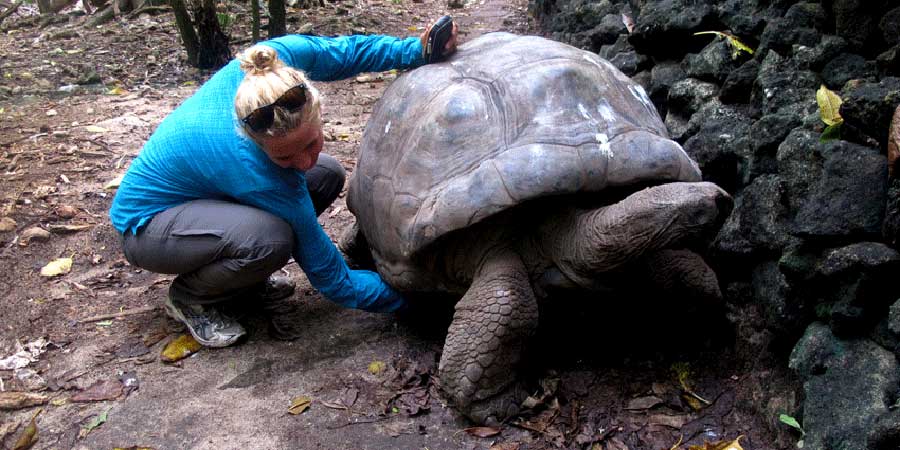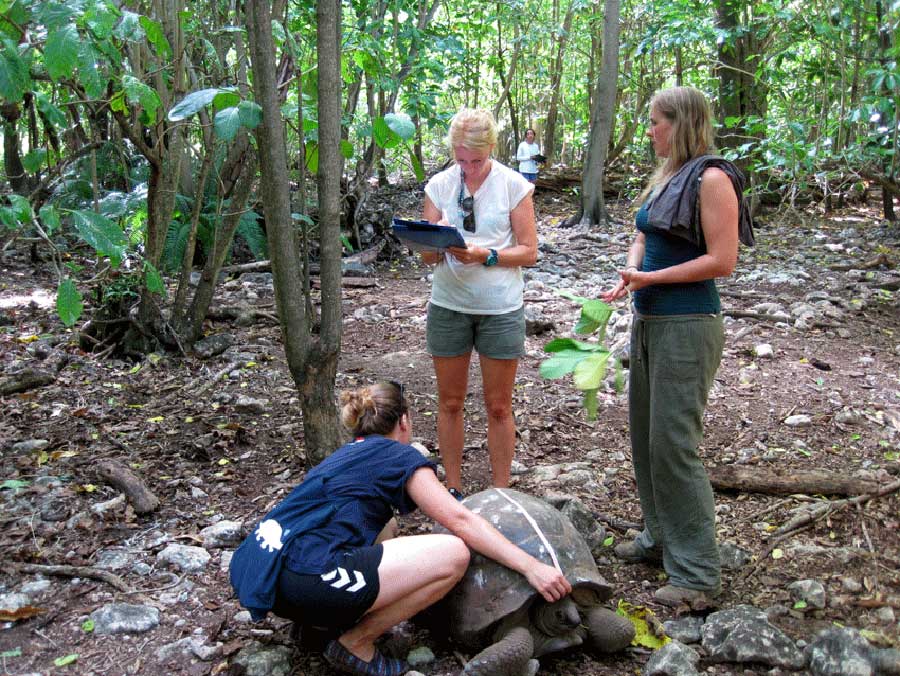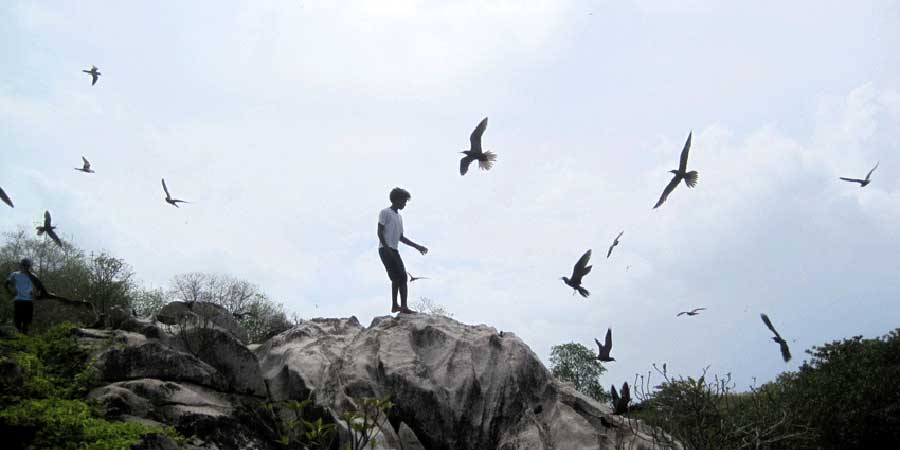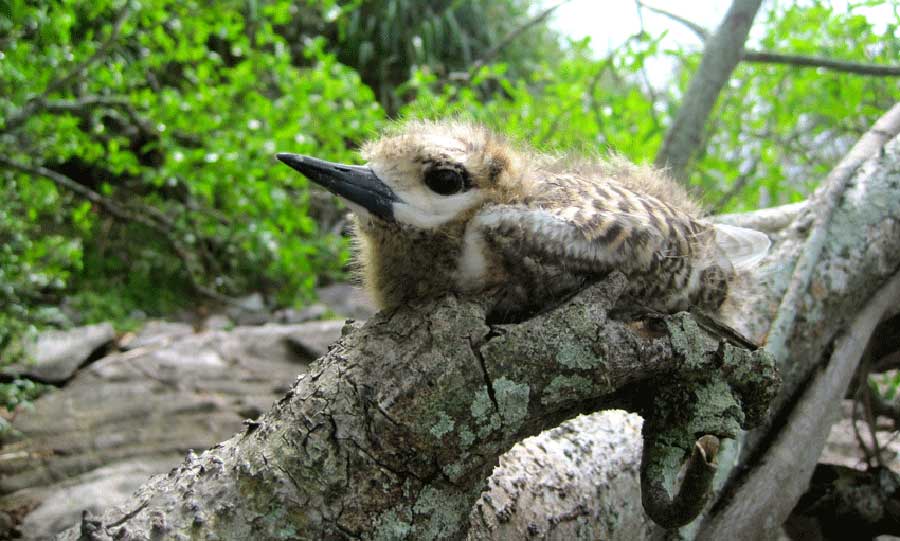
Many people dream of living on a deserted little island in close proximity to nature at its most pristine, but not many get the chance to do it. I am one of the lucky ones. I get to live on Cousin Island Special Reserve for a whole two months!
I get many questions from friends and family about my volunteer work with Nature Seychelles while on Cousin. The work varies but some of our main tasks as volunteers include animal census, such as the census of the giant Aldabra tortoise, which I was fortunate to be part of.
Every year Cousin wardens and volunteers go around the island counting and measuring the tortoises. How it works is that we are all split up into small groups to search different parts of the island. When you find a tortoise, you measure the length and width of the tortoises. You also check for certain characteristics to determine the sex of the animals.

here are several differences between the females and males. For instance, the plastron (‘belly’) of the male is concave and that of the female is flat. Another differentiating feature is that males have longer tails than females. Females also have longer toenails which they use to dig their nests.
Of course it was easy to spot the fully grown tortoises, but the younger ones are not so easy to find. The juvenile tortoises are great at hiding between rocks and underneath plants. Additionally, it is more difficult to determine the sex of the younger tortoises because they are not yet fully developed.
It took fifteen of us more than one week to go around the island, climbing all the way to the highest point on the island and looking under every possible hiding spot. Each time we found a tortoise we marked them to make sure we counted them only once.

When we were done with tortoise census, we started on the seabirds. We spent a lot of time counting the Audubon’s Shearwater (Puffinus Iherminieri), which is done twice a year. There are around 5000 pairs in the cavities around the hillside. They nest in burrows on rat and cat free islands such as Cousin.
Once again we got split up into smaller groups and every group had to work on the same number of plots. We also counted White-tailed Tropicbirds (Phaethon lepturus), White/Fairy Terns (Gygis alba), Brown/ Common Noddies (Anous stolidus) and Lesser Noddies (Anous tenuirostris).
In the day, as we worked through the plots, we marked potential Audubon’s Shearwater cavities so that we could come back in the evening to see if there was any bird in it. These smaller white-bellied shearwaters hide during the day and only come out in the night.
To help find these birds we used playback of electronic sounds of Audubon’s Shearwater. You look for the cavities you have marked in the afternoon, turn out all of your torches and play the sound in front of the holes. If it is occupied they will respond to the sound.

Climbing during the day is relatively easy, especially if like me, you grow up in a country with lots of mountains. But at night it is a completely different story. Not only is it totally dark that you cannot see your own hand, but there are also a lot of shearwaters sitting on the ground.
During the day you cannot see them, because they hide, yet in the night they are sitting everywhere. These birds may be really good in the water and can dive up to 30-40 meters, but on land they are clumsy and instead of taking off when we approach, they tend to bump into us.
Nature Seychelles’ long-time census of wildlife on Cousin is crucial in monitoring and analysing changes in the environment. I am truly happy to have been part of the conservation efforts that help keep the island a paradise for wildlife.
Mirjam Jehle

